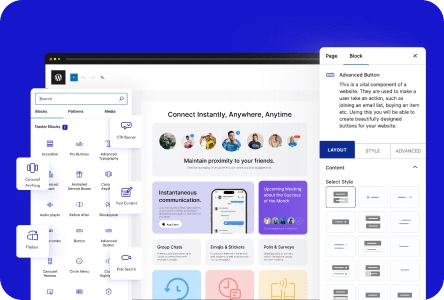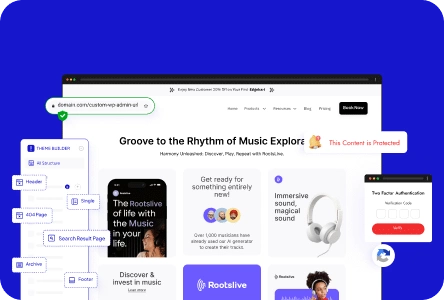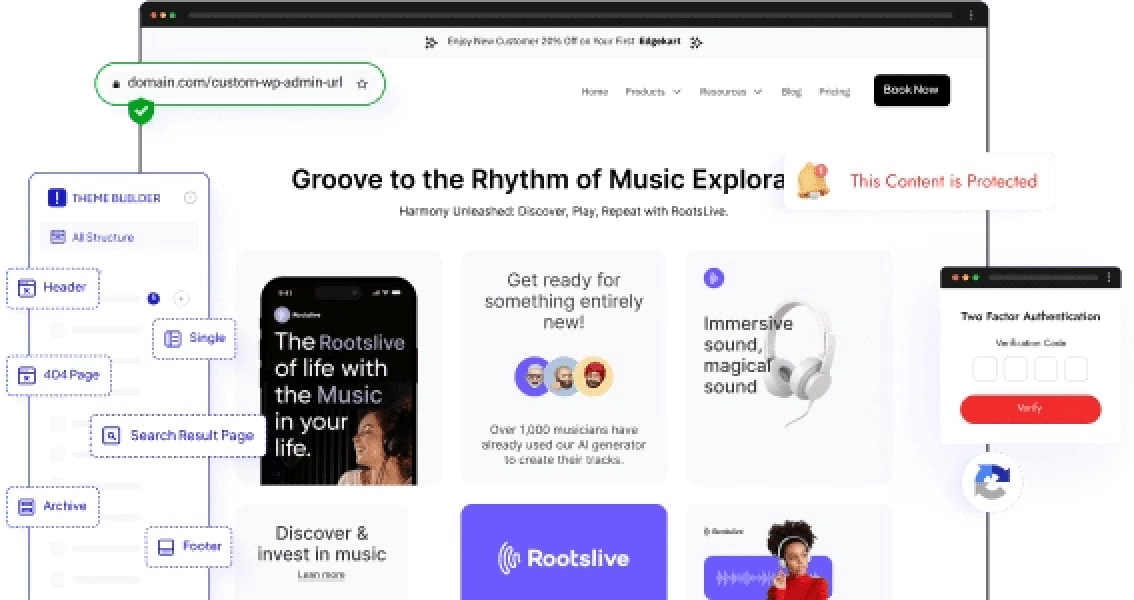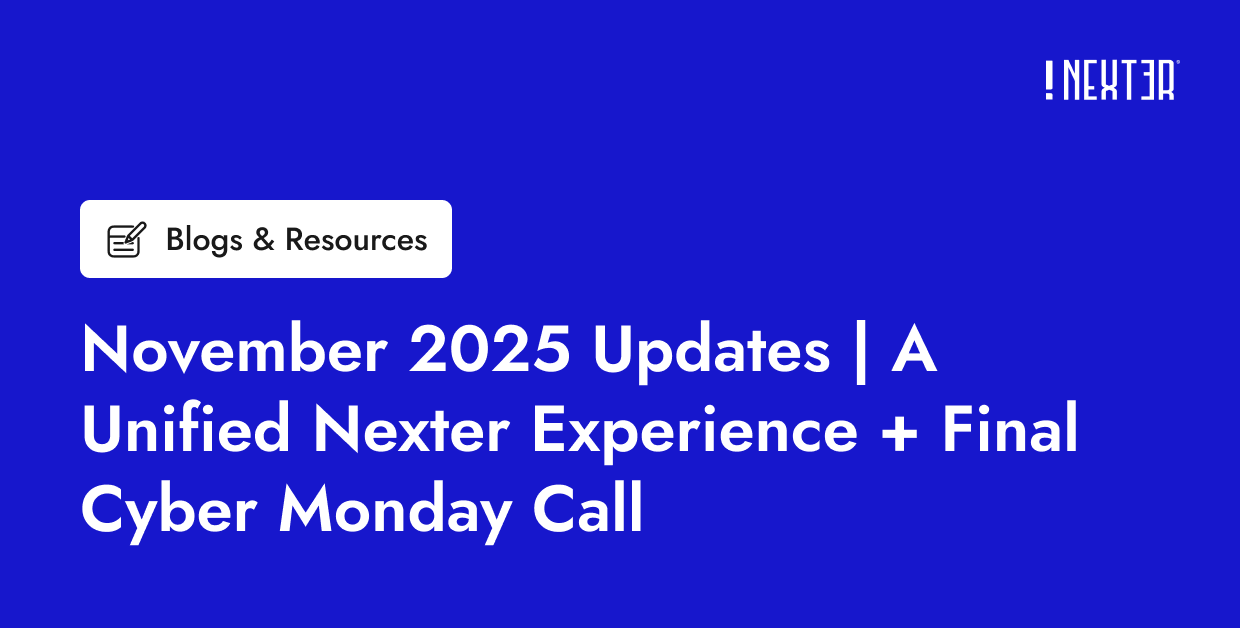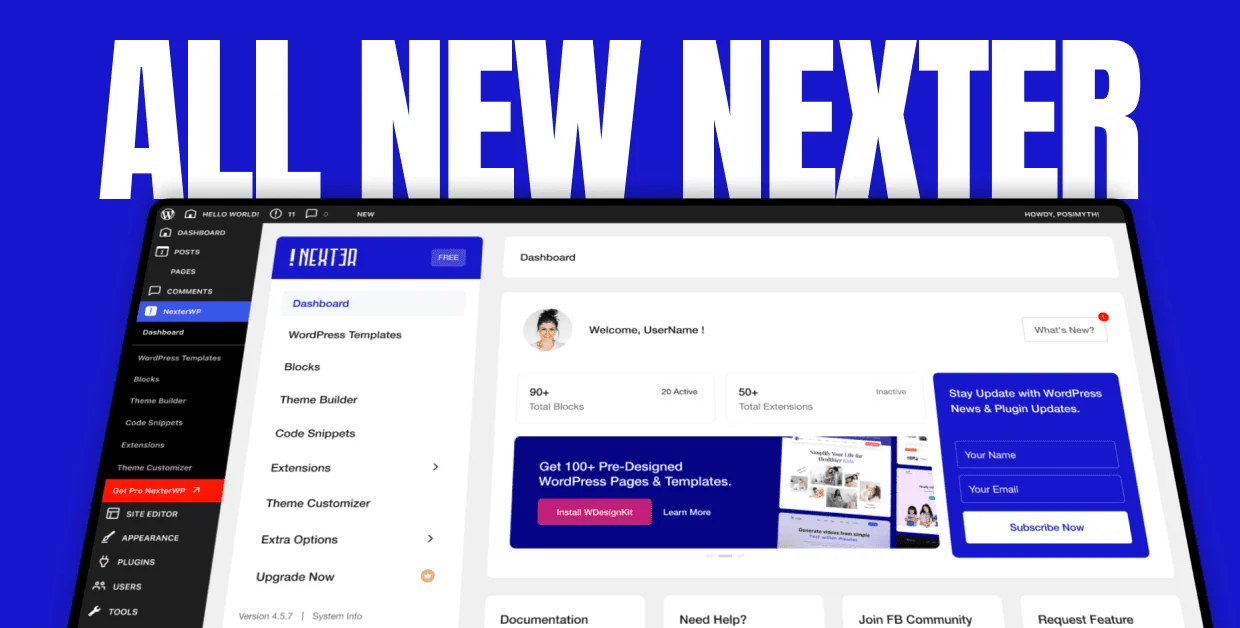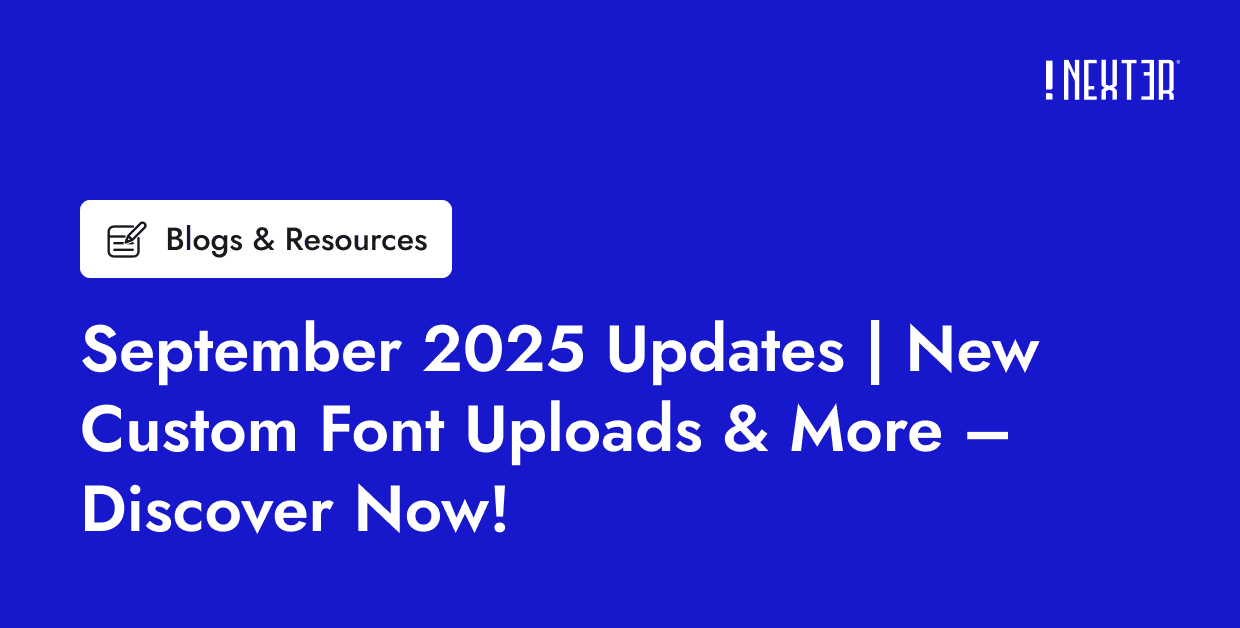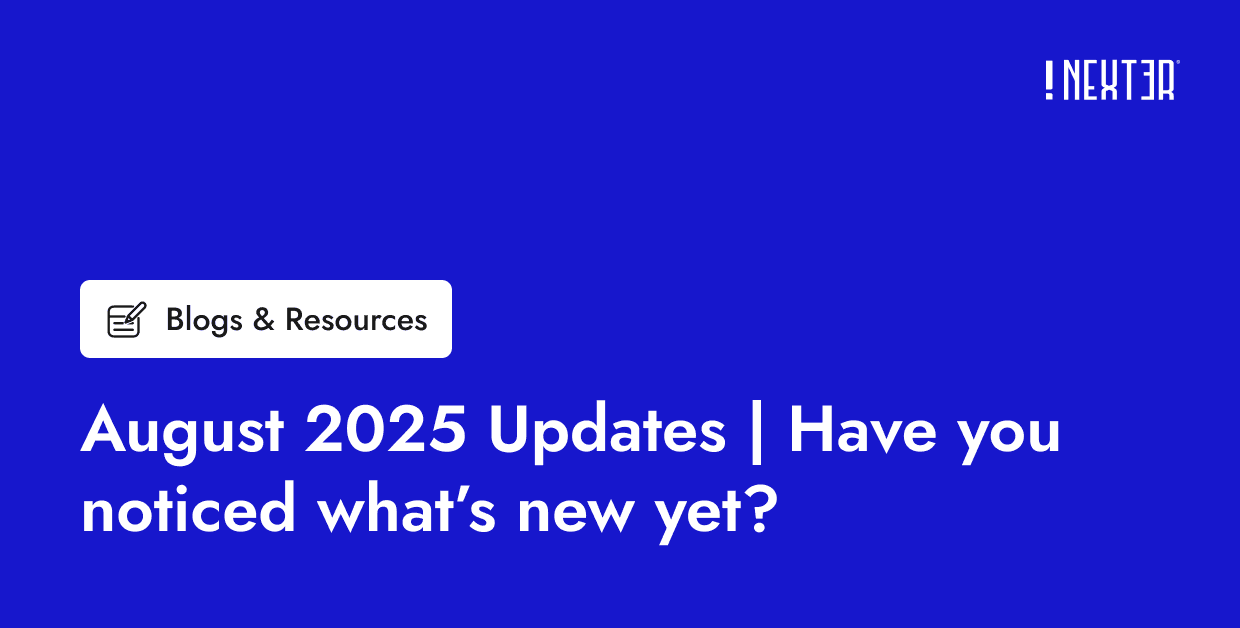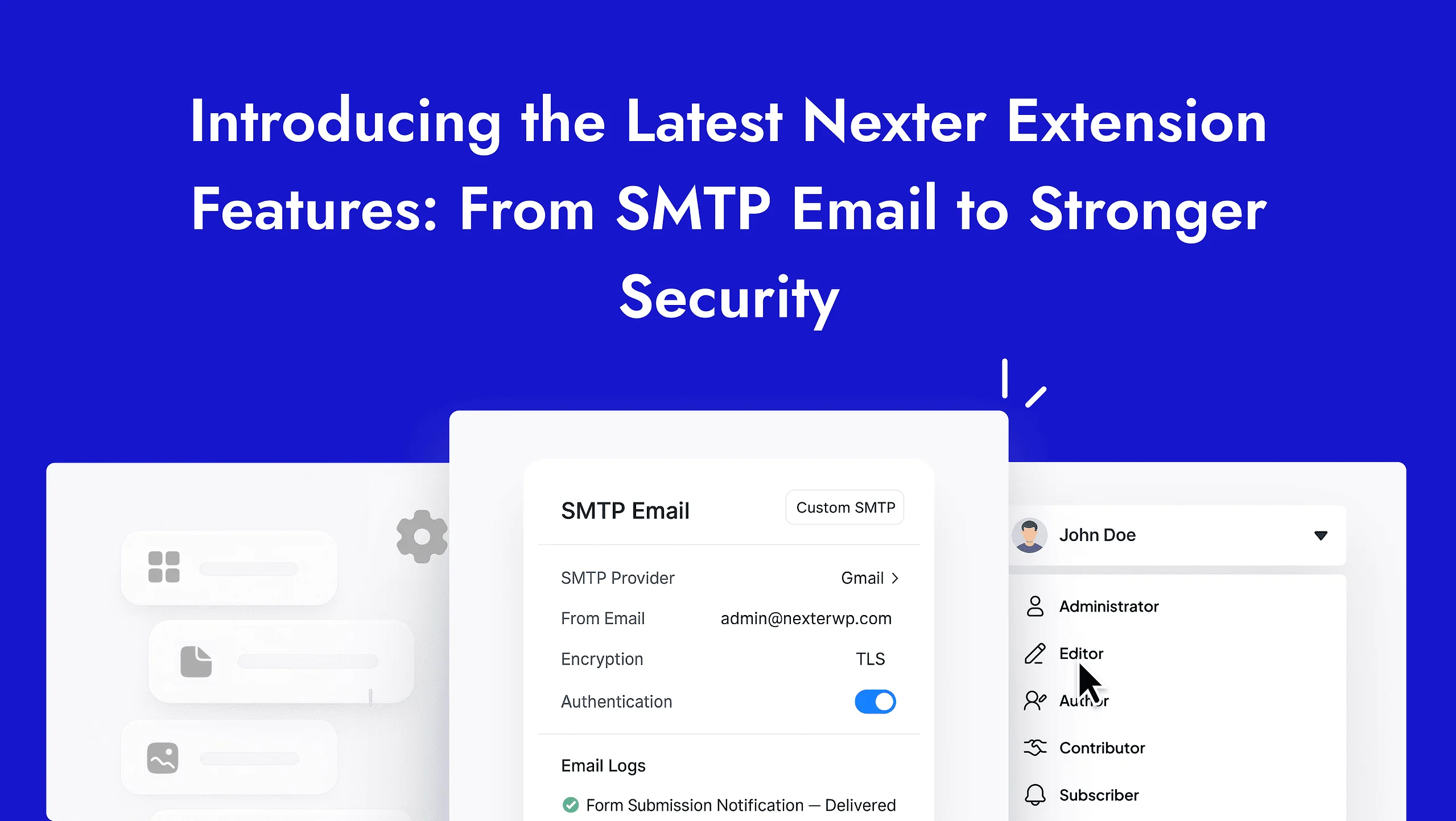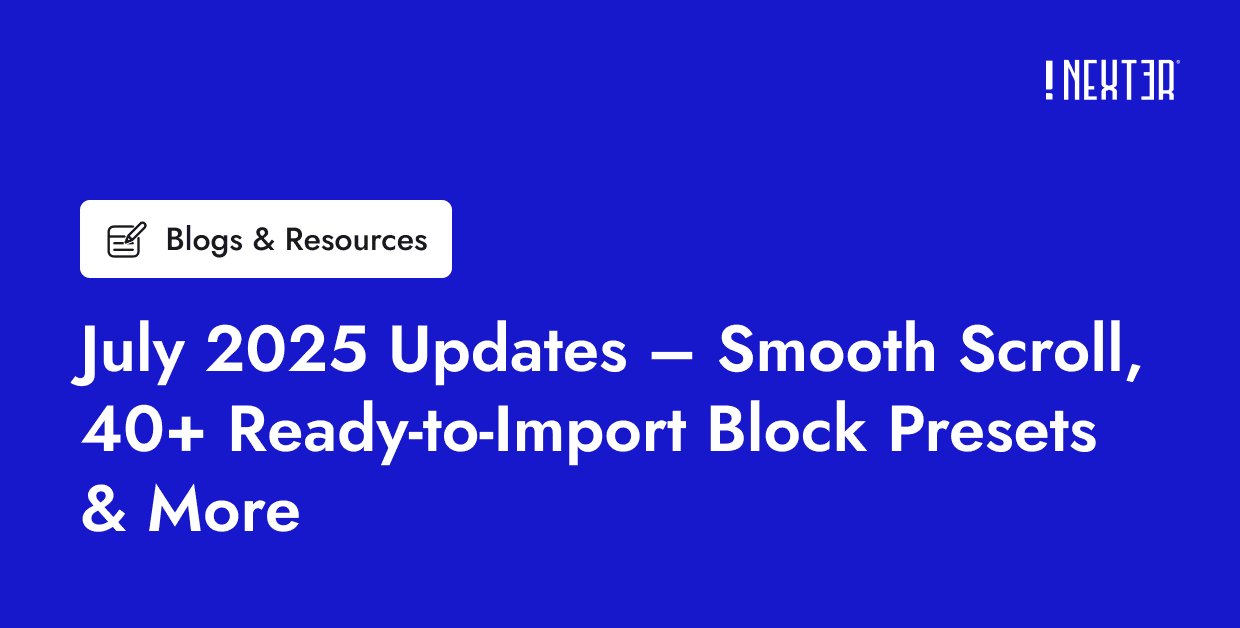Have you ever wondered if a piece of writing was actually created by a person or just AI?
With AI tools popping up everywhere, it’s getting trickier to tell the difference. Honestly, that can be pretty frustrating because you want to make sure the content you’re working with is original and trustworthy.
The good news is that there are AI content detectors that can help you figure this out quickly.
Knowing which AI detectors work best can save you a ton of time and hassle, so you can focus on what really matters: creating or sharing authentic content.
So, let’s discover the best AI content detectors.
What is an AI content detector?
An AI content detector is a tool designed to analyze text and determine whether it was generated by an artificial intelligence (AI) model, such as ChatGPT or GPT-4, or written by a human. These tools help ensure the authenticity of content by identifying AI-generated text.
These tools analyze linguistic features such as syntax, grammar, sentence structure, word patterns, and predictability to detect signs typically associated with AI-generated content.
Some detectors also use machine learning algorithms trained on datasets of human and AI-written content to improve accuracy.
As AI-generated text becomes more advanced and human-like, content detectors play a crucial role in identifying subtle differences, helping users assess the credibility and origin of digital content.
Why should I use an AI content detector?
AI content detectors are useful for anyone who wants to verify whether a piece of writing is original or AI-generated. They are especially beneficial for educators, content creators, journalists, and businesses that want to maintain content integrity and originality.
For educators, these tools help verify whether assignments or essays have been written by students or generated using AI, preserving academic integrity.
Content creators and marketers can use detectors to ensure originality and avoid duplicating AI-generated materials that might harm their SEO or brand trust.
Journalists and editors benefit from AI detectors when verifying sources or ensuring that published stories maintain human authenticity.
Businesses, especially those outsourcing content or accepting user-generated content, can use AI detection tools to maintain quality control and brand consistency.
Overall, using an AI content detector helps foster transparency, build trust, and uphold the value of original human expression.
Best Content AI Detectors Compared
We’ve carefully examined and tested these tools ourselves, so here is the list of the best AI content detector tools that performed well.
1. GPTZero
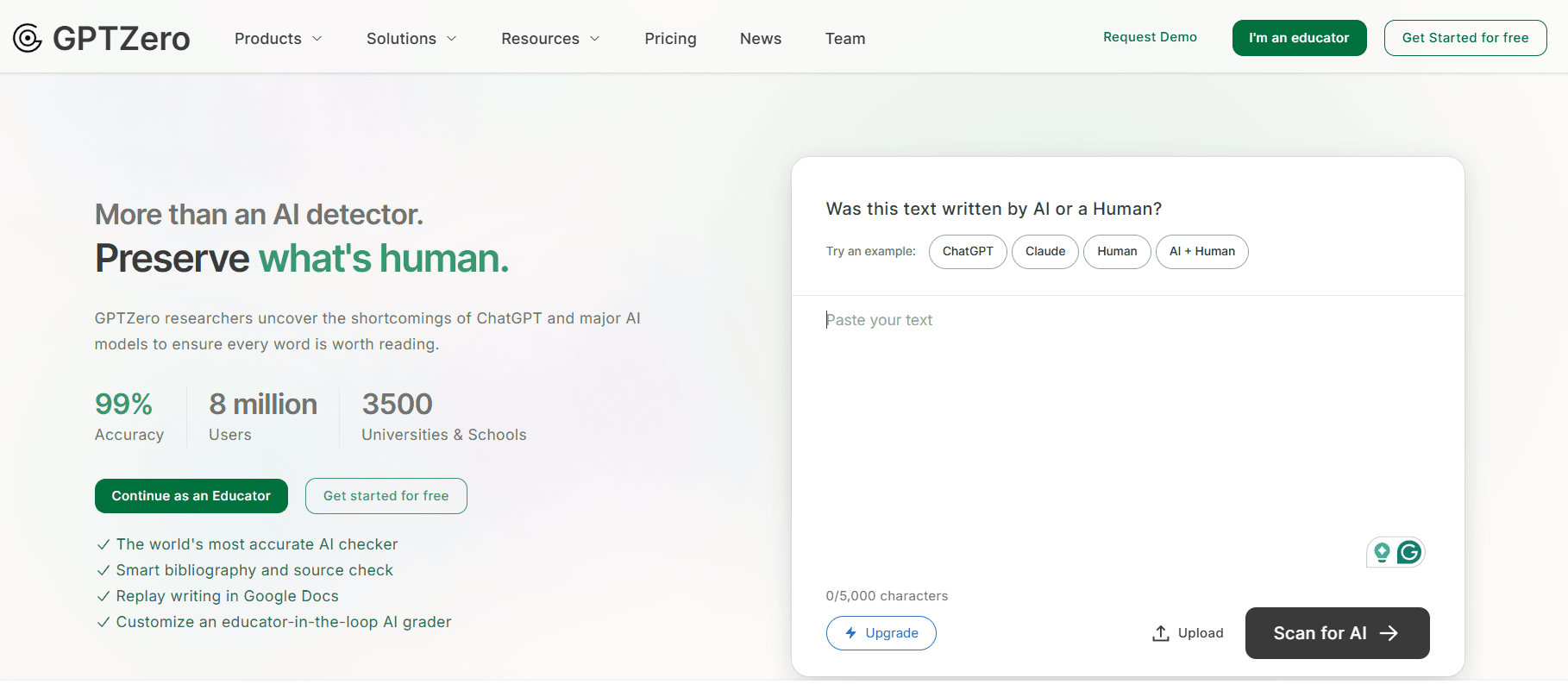
GPTZero is a popular AI content detector designed to identify text created by large language models like ChatGPT. It analyzes writing at the sentence level, making it useful for spotting AI-generated content in different parts of a document.
You can use GPTZero to check essays, articles, or any text where you need to confirm originality. It provides clear results that show the likelihood of AI involvement.
The tool is known for its ease of use and quick scanning. It works well for teachers, editors, and anyone who wants to verify if content is human-written or AI-generated.
Pros of GPTZero
- Accurate at spotting AI-generated text
- Fast and easy to use
- Sentence-level analysis improves detection detail
Cons of GPTZero
- Sometimes struggles with mixed human-AI text
- May produce false positives for complex writing styles
- Limited features compared to some newer tools
2. Winston AI
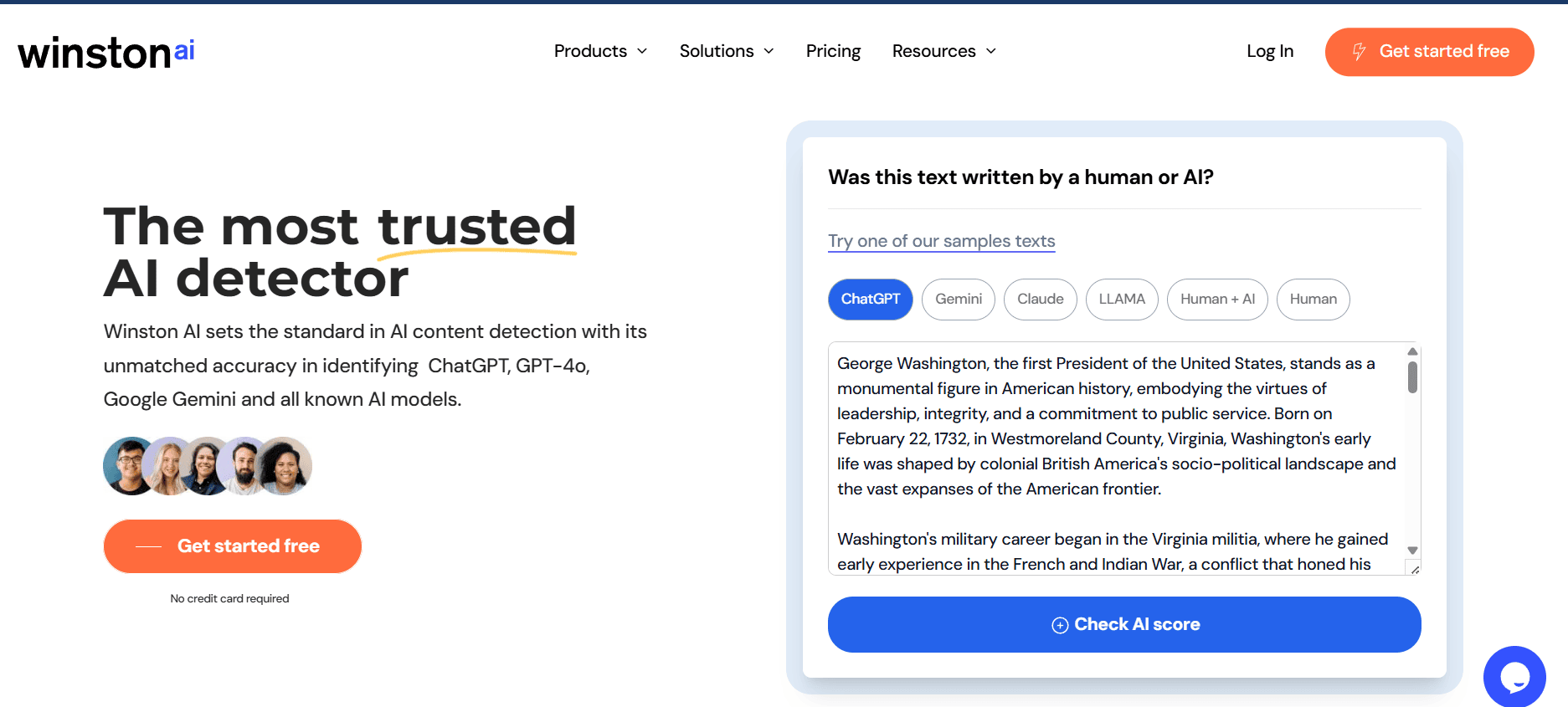
Winston AI is an AI content detector with a high accuracy rate. It is designed to spot text generated by popular AI models like GPT-4 and Google Gemini.
You can use Winston AI in different fields, including education and publishing. It analyzes sentences carefully and gives you a clear result.
The interface is straightforward, making it easy to use for professionals and businesses.
Pros of Winston AI
- High detection accuracy (around 99.98%)
- Supports multiple AI models like GPT-4 and Gemini
- Simple and user-friendly interface
- Useful for educators, publishers, and SEO specialists
Cons of Winston AI
- Occasional false positives or misses
- Requires a subscription for full access
- Limited customization options for advanced users
3. Copyleaks
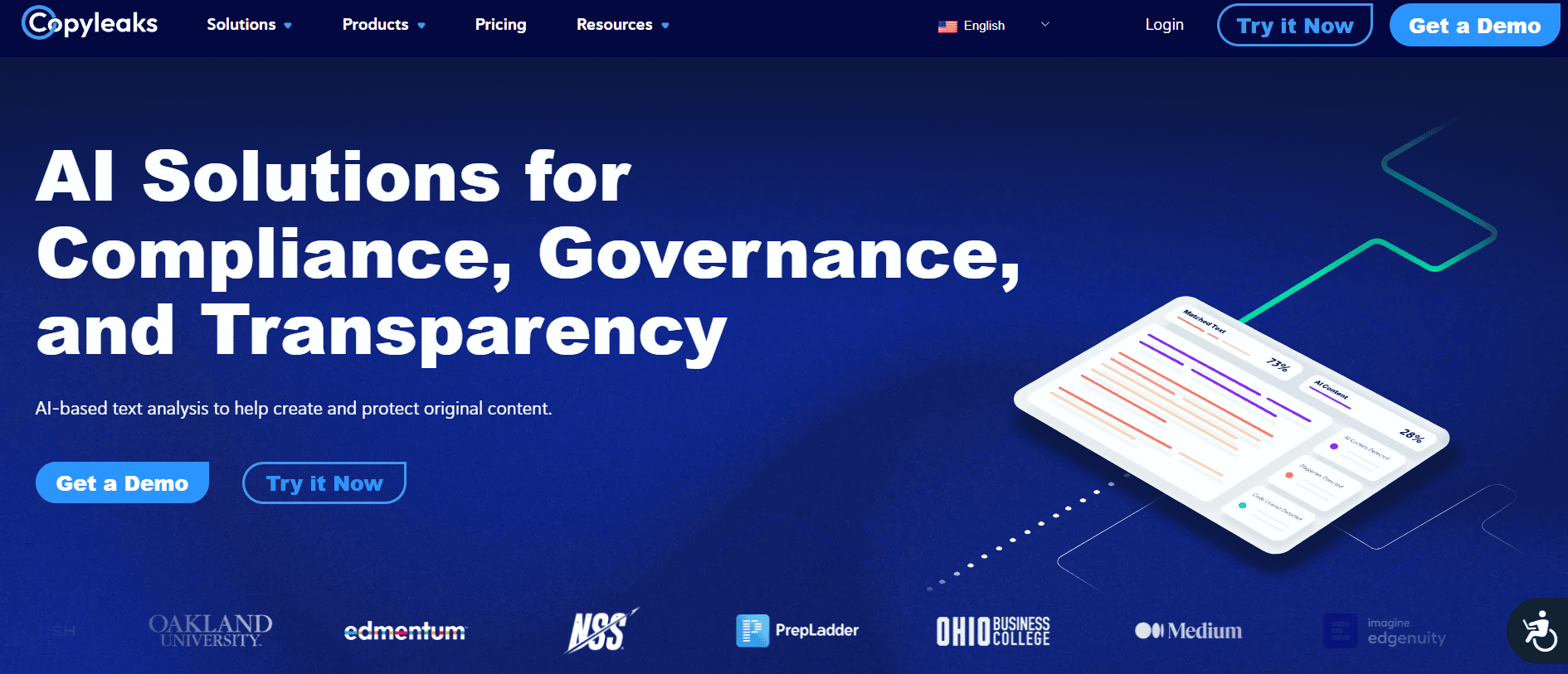
Copyleaks is a reliable AI content detector that focuses on accuracy and language support. You will find it works well with over 30 languages, making it a versatile tool if your content is multilingual. It can detect text generated by tools like ChatGPT, Gemini, and Claude.
The detection accuracy is high, with claims of over 99% accuracy and a low false-positive rate. This means you can trust it to identify AI content with fewer errors than many other detectors.
It is useful for educators, writers, and businesses aiming to maintain content authenticity.
Looking to supercharge your WordPress site with AI? Check out our 12 Best AI WordPress Plugins + Free Tools to discover how AI can take your website to the next level.
Pros of Copyleaks
- Supports more than 30 languages
- Detects content from many AI models
- Very high accuracy with low false positives
Cons of Copyleaks
- Requires a subscription for full features
- The interface can be complex for beginners
- Focuses mainly on text, not multimedia content
4. Turnitin AI
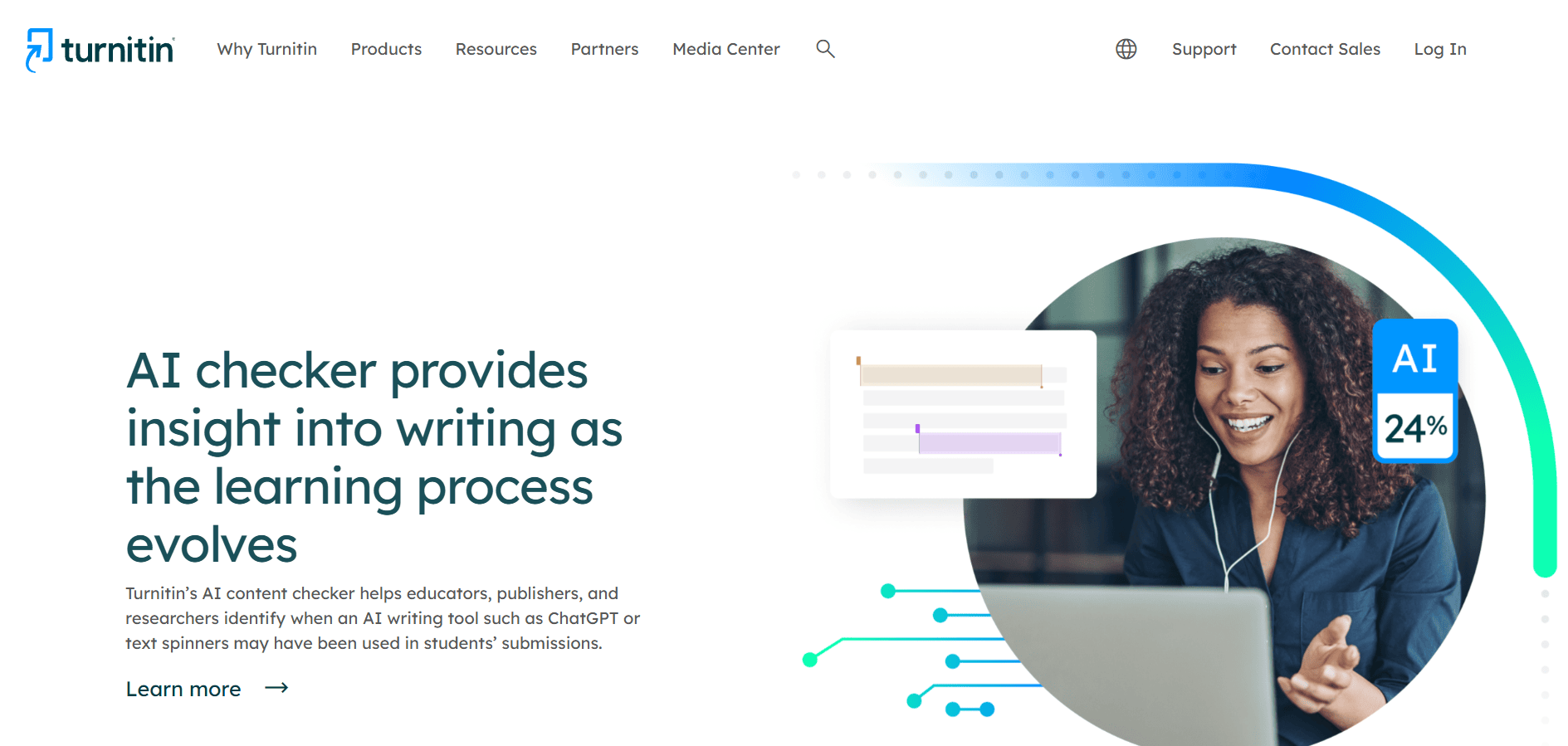
Turnitin, widely known for plagiarism detection, now includes AI writing detection to help educators spot AI-generated content in student submissions. It provides a percentage score indicating how much of the text may have been written by AI tools like ChatGPT.
The tool is built into Turnitin’s Similarity Report and is widely used in schools and universities. However, Turnitin advises that results be interpreted carefully and not used as the sole basis for academic decisions.
Pros of Turnitin AI
- Integrated into Turnitin’s existing plagiarism tool
- Shows the percentage of AI-written content
- Designed for academic use and trusted by institutions
Cons of Turnitin AI
- May produce false positives on formal or repetitive text
- Doesn’t highlight exact AI-generated portions
- Requires an institutional Turnitin subscription
5. Originality.AI
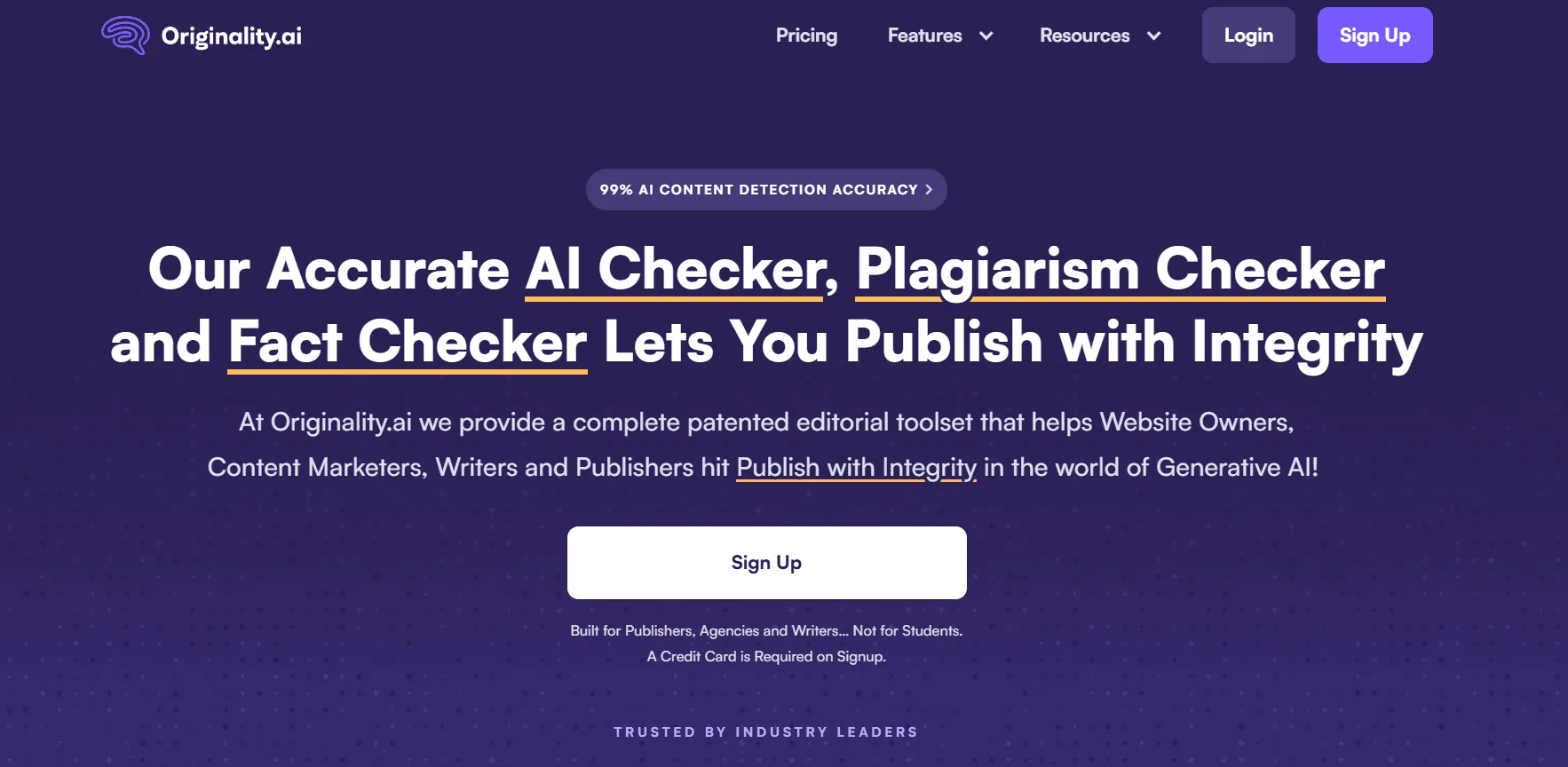
Originality.AI is known for its strong ability to detect AI-generated content. It uses deep analysis to check if text is created by AI or a human, making it useful if you want reliable results.
You can also use this tool to check for plagiarism. This helps ensure that the content is original and not copied from other sources.
The tool supports multiple content types, including articles and blogs. It works well for writers, editors, and website owners who want to maintain authenticity.
Pros of Originality.AI
- High accuracy in detecting AI content (over 99%)
- Includes plagiarism checking
- Easy to use with multiple content formats
Cons of Originality.AI
- Requires a paid subscription for full features
- Some false positives can occur with very short texts
- The interface might feel basic compared to other tools
Want to bring AI-powered images to your WordPress site? Check out our How to Generate AI Images in WordPress guide to learn how to easily create stunning visuals.
6. Grammarly Business

Grammarly Business offers more than just grammar checking; it includes AI content detection and plagiarism checking. This makes it a useful tool if you want to ensure your writing is original and not generated by AI.
The AI detector can recognize texts made by tools like GPT-3 and GPT-4. It helps you flag AI-generated content, which can be important for educators and professionals.
Using Grammarly Business also gives you access to team management features. This helps you control how your team creates and checks content.
Pros of Grammarly Business
- Detects AI-generated content reliably
- Includes plagiarism detection
- Offers tools for team collaboration
- Easy to use and integrates well with writing apps
Looking to boost your site’s SEO with AI? Discover the 5 Best WordPress SEO Plugins using AI to help improve your website’s rankings effortlessly.
Cons of Grammarly Business
- Requires a subscription for the feature
- May miss highly sophisticated AI-generated text
- Best suited for business and professional use, which could be costly for individual users
How AI Content Detectors Work
AI content detectors use specific methods to identify whether text is generated by AI or written by a person. They look for patterns and features unique to AI writing.
You will learn about the main algorithms these tools use and the limits they face when detecting AI content.
Key Detection Algorithms
Most AI detectors rely on pattern analysis in the text. They check for things like unusual word choices, sentence structure, and repetition that AI often produces. For example, AI tends to use certain phrases more frequently, or the text may have a more uniform style.
Some detectors use machine learning models that have been trained on large sets of AI-written and human-written text. These models assign a probability score showing how likely the text is AI-generated.
Another technique involves measuring the randomness or “burstiness” in writing. Human writing usually shows more variation in sentence length and structure, while AI writing is often more consistent.
Common Limitations
AI detectors are not perfect and can sometimes give false results. They may wrongly label human writing as AI, especially if the human text is very formal or repetitive. This can happen because some styles overlap with AI patterns.
These tools also struggle with very short texts, where there isn’t enough data to analyze patterns well. AI detectors may fail if the AI writing is edited heavily by a human, making detection harder.
Finally, advances in AI models mean that detectors need to keep updating. If they use outdated methods, they might miss new AI writing styles or formats.
Use AI Content Detectors With a Powerful Website Toolkit
While AI content detectors help maintain content authenticity, your readers also judge your site based on speed, design, and usability. That’s where a reliable WordPress framework comes in.
Nexter is a blazing-fast WordPress theme + block toolkit that helps bloggers, creators, and business owners build professional websites without bloated code or performance issues.
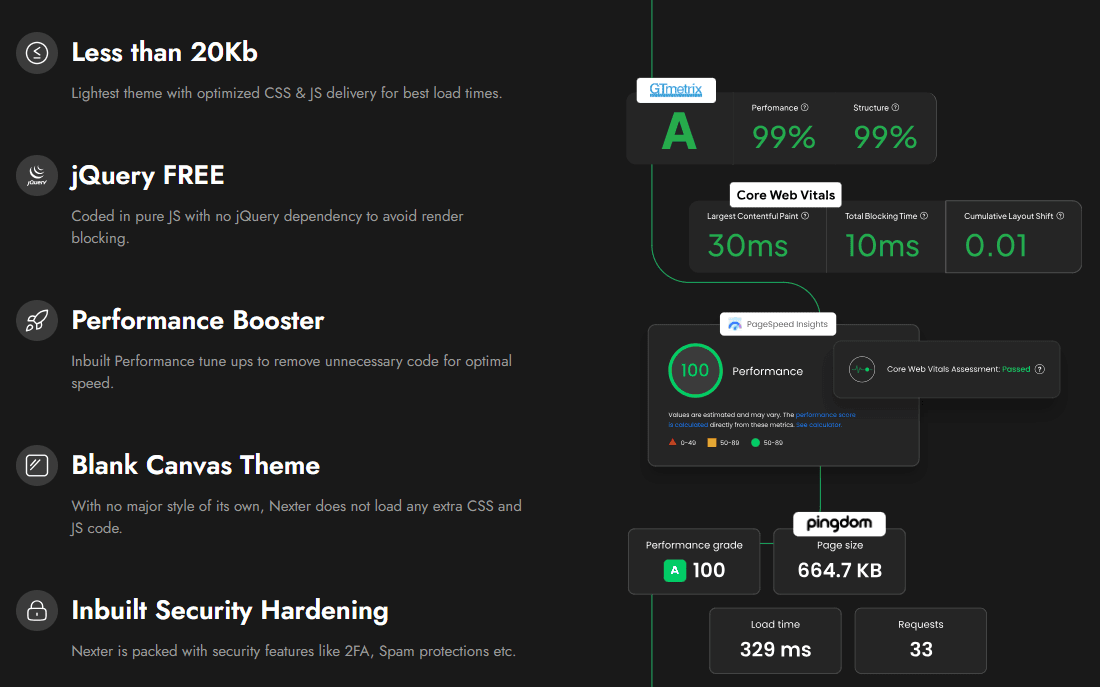
- Optimized for Core Web Vitals
- Compatible with AI-powered content workflows
- Flexible header/footer builders, SEO tools, and global styles
- Works great with Gutenberg, Elementor, and other builders
Want to combine authentic content + a high-performing site? Nexter makes it simple, even with AI-powered workflows.
Stay updated with Helpful WordPress Tips, Insider Insights, and Exclusive Updates – Subscribe now to keep up with Everything Happening on WordPress!
Wrapping Up
We’ve explored the top AI content detectors—each with its own strengths. While some are perfect for academic use, others shine with multilingual support or deeper analysis. But no tool is flawless. That’s why it’s smart to use a mix of detectors and trust your own judgment.
At the same time, presenting your content on a fast, professional website matters just as much.
If you’re aiming to publish authentic content and want a powerful yet lightweight WordPress site to match, Nexter makes it easy. It’s built for speed, flexibility, and seamless AI integration, perfect for bloggers, creators, and businesses.
FAQs on Best AI Content Detectors
What is an AI content detector?
An AI content detector is a tool designed to analyze text and determine whether it was generated by an artificial intelligence (AI) model, such as ChatGPT or GPT-4, or written by a human. These tools help ensure the authenticity of content by identifying AI-generated text.
How do AI content detectors work?
AI content detectors work by analyzing the structure, wording, and patterns in the text. They compare the writing to known characteristics of AI-generated text, such as repetitive phrasing, overly formal language, or unusual sentence structure. Some tools use machine learning algorithms trained on large datasets of both AI and human writing.
Are AI content detectors 100% accurate?
No, AI content detectors are not perfect. They may produce false positives (labeling human-written text as AI-generated) or false negatives (failing to detect AI-generated text). The accuracy of these tools can vary, so it’s best to use them as a part of your overall content verification process.
Can AI content detectors be used for any type of text?
Yes, most AI content detectors can be used for a wide range of text types, including essays, articles, blog posts, and even social media content. However, some detectors may be better suited for specific types of content, such as academic writing or short-form content.
Do AI content detectors identify specific AI-generated sections?
Some AI content detectors provide an overall percentage of AI involvement in the text but do not highlight the specific sections that were generated by AI. This means you may need to manually review the content to identify the exact parts flagged as AI-generated.
Are there free AI content detector tools?
Yes, there are free AI content detector tools available. However, they may have limitations, such as fewer features, limited word count, or less accurate results compared to paid tools. Many paid tools offer more in-depth analysis and additional features like plagiarism detection.
Can AI content detectors detect all types of AI-generated text?
Most AI content detectors are designed to identify text generated by popular AI models like GPT-3, GPT-4, and others. However, as AI models continue to evolve, detectors may need regular updates to accurately detect newer writing styles and formats.
Do AI content detectors work for non-English text?
Some AI content detectors support multiple languages and can detect AI-generated content in languages other than English. However, the effectiveness of these detectors can vary based on the language and the tool’s capabilities.
What should I do if an AI content detector flags my content as AI-generated?
If an AI content detector flags your content as AI-generated, it’s essential to review the results carefully. You can try rewriting certain sections, using a more natural tone, or running your content through multiple detectors for confirmation. If you’re using AI for content generation, consider editing the text to make it more human-like.
What methods do the leading AI detectors use to identify synthetic text?
These tools use machine learning models to spot patterns common in AI writing. They examine repetition, phrasing, and inconsistencies not usual in human writing.
Can AI-generated content be reliably identified without human intervention?
Detection tools can spot AI content with reasonable accuracy, but no method is perfect. Combining software results with human review gives better confidence.
